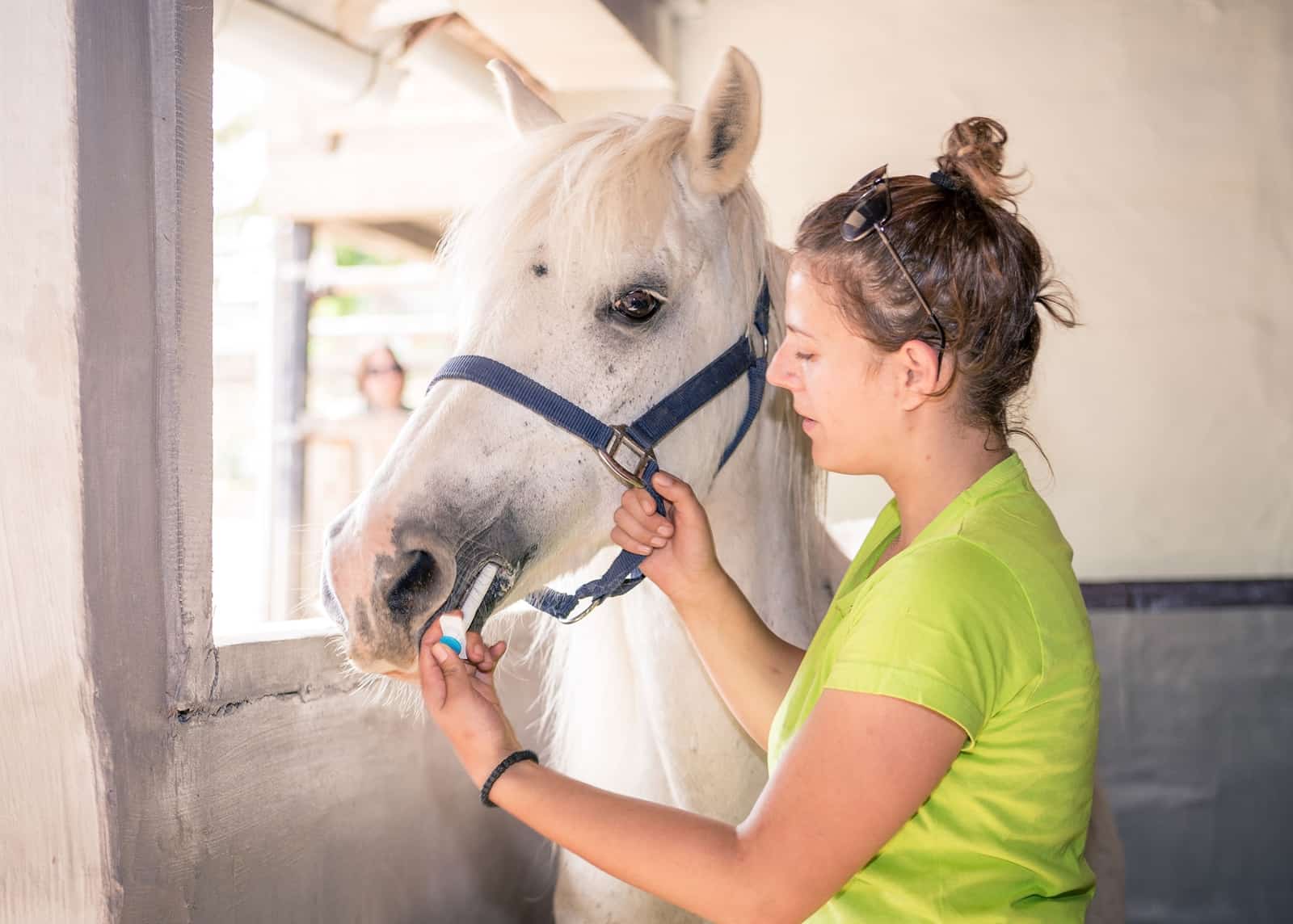Can I Maintain My Semiretired Horse on an NSAID?
- Posted by Scott Hopper, DVM, MS, Dipl. ACVS

Q.My dressage horse is now semiretired. When he was in intense training to compete at the upper levels, he received quite a bit of maintenance (joint injections, Equithrive, MSN, Osphos, etc.), including a daily dose of Equioxx (firocoxib) for his osteoarthritis. He is currently ridden very lightly three days a week, including one weekly jumping lesson that involves cantering over cross rails (nothing over 2 feet).
He is acting like he really loves the little bit of jumping and goes with his ears up and none of reluctance he had shown in his extended and collect gaits for dressage. He’s sound but stiff. My understanding is that Equioxx has a cumulative effect and needs to be given consistently to be effective. Would it be better to keep him on Equioxx daily or instead give him Bute (phenylbutazone) on an as-needed (once or twice a week) basis? Or, can I just give him Equioxx occasionally as needed? He has had gastric ulcers in the past, so that’s a concern as well.
—Via e-mail
A.Both phenylbutazone and Equioxx are commonly used and effective anti-inflammatory medications. Which drug to use and the frequency and duration of each medication is something all owners should discuss with their veterinarians. There is often a variety of factors that will be taken into consideration when making a drug choice.
In your question, you mention that your horse is stiff. This could be a sign that your horse is actually lame. A thorough lameness examination would be recommended prior to placing your horse on long-term medication.
A common misconception is that Equioxx does not cause gastric ulceration like phenylbutazone. But a recent publication demonstrates that both Bute and Equioxx can cause some degree of gastric ulceration. The gastric ulcerations seen were less severe in the Equioxx group. Because your horse has already had gastric ulcer issues, it would be recommended you place the horse on anti-ulcer medication or some other form of gastroprotectant in conjunction with any non-steroidal medication.
If your horse does need to be treated with non-steroidal medication, I would first see if Bute or Equioxx help the perceived stiffness you describe. Periodic administration of either is an acceptable choice, but which to choose depends on your horse. With your horse’s history of gastric ulcers I would likely try Equioxx first—treat him for 10 days and see how he responds. If there is a positive response then I would give it to him as needed. If Equioxx is not effective then you can give Bute as needed. I would not recommend that either medication be given long-term.
Routine exercise might be the best thing for the perceived stiffness. If he warms up and the stiffness resolves, I would not give him any medication.
Again, a thorough lameness examination might identify a source of lameness causing the perceived stiffness. Horses with osteoarthritis in the lower hock joints are often described by the owner as stiff. Medicating these joints may resolve the problem and is a more effective method of treatment than long-term non-steroidal anti-inflammatory medication.

Written by:
Scott Hopper, DVM, MS, Dipl. ACVS
Related Articles
Stay on top of the most recent Horse Health news with
















2 Responses
You don’t need to post this, it is more a thought for your authors. I must say, that was one of the better original questions with the amount of information given while being brief. I understand that Dr. Hopper MUST give some of the pat responses he did, but the way he went about it was rather insulting to the questioner’s intelligence and competence that was evident. He could have said, “wow, you’ve really done your due diligence, and by the sound of things you have had lameness evals done and you are managing his workout routine appropriately for an older athlete, which are always the first steps before medication” and then gone on to give a real answer. It is rare that any article teaches me something at this point in my professional equine career, and I was really looking forward to learning something from this one as my local vets have not answered this question to my satisfaction. Sadly, not really.
12 year old thoroughbred racehorse ran until 8 years old. Now he performs effectively at one meter jumps and all phases of eventing. Feels rough behind at the trot but looks free moving to the vet. I have noticed he likes to stand with his hind quarters slightly elevated and his rear feet both pointed at a slight downward position with the heels elevated by having soil or bedding packed under them. THOUGHTS???? Thanks Tom